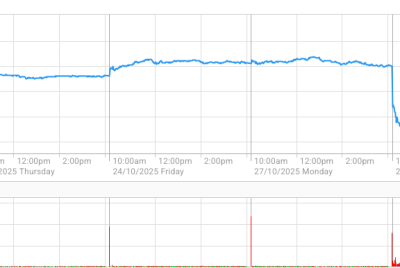Australia's vehicle efficiency standard must stand firm to meet climate targets

KEY POINTS
- Scaling back emission laws could hinder Australia's climate goals.
- Affordable EV adoption relies on better infrastructure, not fewer regulations.
- International companies like Gridserve and Dahua Technology could lead the charge in upscaling EV infrastructure cost-efficiently.
With the Albanese government re-elected, the New Vehicle Efficiency Standard (NVES) is set to proceed as planned from July despite criticism from the Coalition, which labelled it a "poorly designed" and unfair tax on families.
The election outcome sends a clear message: Australians want climate action to continue, not stall. And with transport emissions rising and international obligations looming, it's more important than ever that policymakers prioritise practical, bottom-up solutions like expanding charging infrastructure and incentivising cleaner technologies, to support the transition to electric vehicles.
The NVES, introduced by the Albanese government, places a cap on the average emissions of new cars sold, rewarding automakers who supply cleaner vehicles and penalising those who do not.
Far from being a burdening tax, the scheme is a market-based mechanism that encourages cleaner technologies and can help consumers save money.
Indeed, the government had previously estimated that it would save a new car owner $5,170 over five years and suggested that over the life of the vehicle, Australians could save about $17,000 by paying less money for fuel. This was in addition to also slashing transport emissions and stopping the nation from becoming a "dumping ground" for older, less-efficient cars.
Without such schemes in place, experts warned that progress towards Australia's climate targets will be derailed.
The 2015 Paris Agreement, to which Australia is a signatory, requires developed nations to decarbonise their transport by as much as 80% by 2050. With carbon emissions from transport accounting for 21.1% of the nation's total emissions (to June 2023), a figure that will only grow without intervention.
What is more, Australia would be joining Russia, Turkey and Indonesia as one of the few countries worldwide without strong fuel efficiency standards for new vehicles.
If affordability for families remains a concern, the solution lies not in removing essential environmental regulation like the NVES, but in introducing systems that make EV adoption more accessible and less costly to ensure we are not stirring away from climate goals.
A major barrier to broader uptake, for instance, is the perception of inadequate and cost-effective charging infrastructure.
According to Diane Tate, the Chief Executive of the Australian Finance Industry Association, buyers are staying away from EVs due to the lack of uniform charging standards and inconsistent incentives and fees.
While local venture capital and investment has been more cautious, the global shift towards EVs is gaining traction and international companies and investors could fill this gap.
Their growing interest is already starting to be seen, with UK EV charging hub operator Gridserve, expanding internationally and venturing into the Australian market in December of 2024, thanks to a partnership with local energy retailer Flow Power. This will see the companies deliver a nation-wide public network of ultra-fast EV chargers this year.
Similarly, Dahua Technology has begun rolling out its D-Volt intelligent EV charging solutions in Australia. With both residential and commercial options, the D-Volt series includes solar integration, allowing vehicles to be charged using 100% solar energy or a mix of solar and grid power, helping to reduce both costs and environmental impact.
In short, the potential for more affordable, accessible EVs is there. With the NVES now set to take effect, policymakers should prioritise practical, market-driven solutions, enabling companies and investors to create a more sustainable, affordable future for electric vehicles.
© Copyright 2025 IBTimes AU. All rights reserved.





















